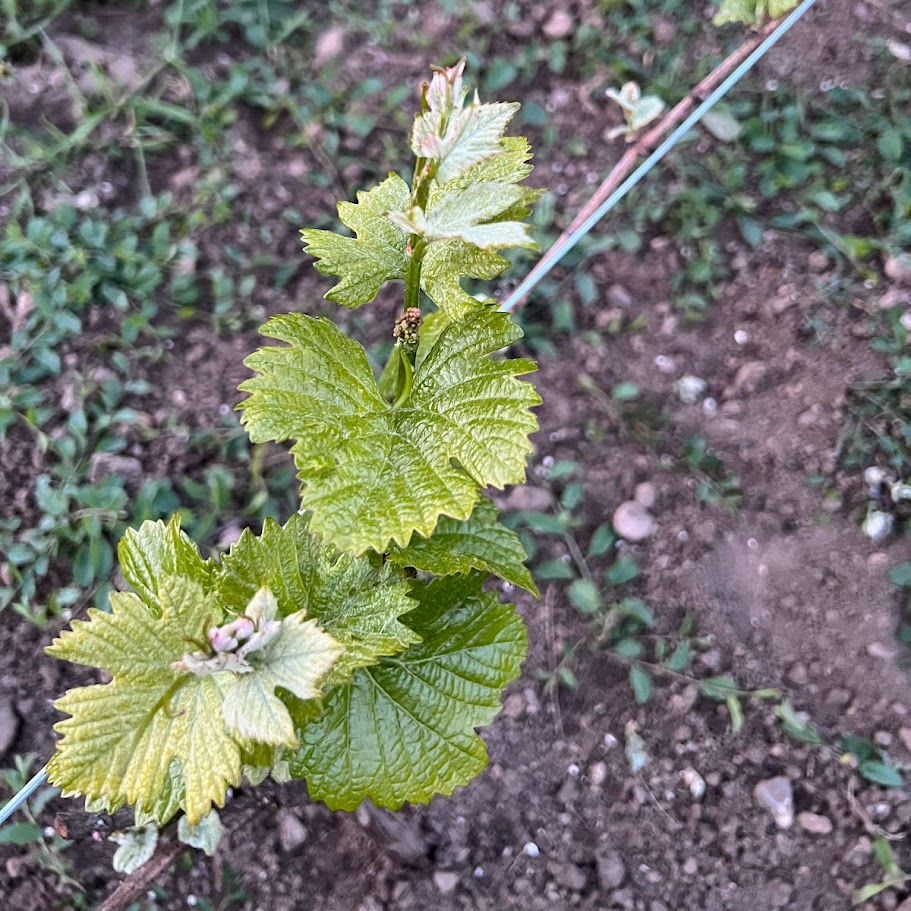Why is Vitis vinifera so rare in Quebec despite its global fame?
- Benoit Labelle
- Jul 8
- 4 min read
Updated: Aug 20
Introduction
Vitis vinifera are the most widely cultivated, vinified, and consumed grape varieties in the world. Famous red wines such as Pinot Noir, Merlot, Cabernet Franc, and Cabernet Sauvignon come from them, as do many great white wines like Chardonnay, Riesling, Sauvignon Blanc, and Pinot Gris. Despite their immense popularity and worldwide reputation, Vitis vinifera represents only around 20% of the vines grown in Quebec. Conversely, nearly 80% of Quebec vines consist of hybrids, such as Frontenac, Vidal, Seyval, and Marquette, to name just a few.
According to the Conseil des vins du Québec, the proportion of Vitis vinifera is steadily increasing each year. Could we hope that one day, these varieties will match—or even surpass—hybrids in cultivated area?
In this article, discover the characteristics of this species and the reasons why Quebec winegrowers generally favor hybrid grape varieties.
1. Vitis vinifera are much more sensitive to cold than hybrid vines

Originally from Europe and Western Asia, the Vitis vinifera vine thrives mainly in warm and sunny regions. It is much more sensitive to cold than hybrid vines. The frost tolerance threshold of the fruit buds of Vitis vinifera is around -20 °C, whereas some hybrids can withstand temperatures as low as -30 °C. Some varieties like Merlot and Sauvignon Blanc struggle to survive below -15 °C. Quebec’s northern climate thus presents a real challenge for growing these vines.

To ensure their survival, Quebec winegrowers must resort to winter protection techniques such as ridging, burying vines, and using geotextile tarps. These methods inevitably involve more labor, work, and investment. The issue is significant, considering that a vine takes about five years to reach full productive maturity. Thus, frost damage not only compromises the current year’s harvest but may also threaten plant survival and future yields.
2. Vitis vinifera requires a lot of sunlight and heat
Beyond cold sensitivity, Vitis vinifera also needs more days of warmth and sunlight to fully ripen its grapes compared to hybrids.
To assess whether a region's climate is favorable for grapevine cultivation, we use the Growing Degree Days (GDD) index. This index measures the number of days where temperatures range between 10 °C and 30 °C, a range essential for grape ripening. Temperatures outside this range are excluded from the calculation.
Due to its cooler climate, Quebec has certain limitations when it comes to wine-growing potential, especially when compared to warmer wine regions in Europe or the U.S.
On average, hybrid varieties require about 1100 GDD to reach maturity. The earliest-ripening Vitis vinifera varieties, such as Pinot Gris, Pinot Noir, and Chardonnay, need at least 1200 GDD. Later-ripening varieties like Cabernet Franc, Cabernet Sauvignon, and Riesling require a minimum of 1400 GDD.
In comparison, southern Quebec has an index between 1400 and 1500 GDD, similar to the climate of northern Burgundy, France. This similarity allows some Quebec vineyards to grow later-ripening varieties where local conditions permit.


To address challenges posed by the short growing season, many winegrowers turn to innovative solutions: climate-controlled greenhouses or geothermal systems with heated piping at the base of the vines.
3. Significant vulnerability to diseases
Long, warm, sunny seasons are essential for producing flavorful grapes. However, too much heat can become a problem: when temperatures exceed 30 °C, the vine stops growing. Moreover, excessive humidity significantly increases the risk of fungal diseases like downy mildew, botrytis, or black rot.

All vines are susceptible to these diseases to some extent, but Vitis vinifera is generally more vulnerable than hybrid grapes. Each variety presents its own challenges: for example, Pinot Noir, whose clusters are particularly dense, is more likely to develop botrytis due to poor airflow between berries.
Some natural factors help reduce disease risk. Vineyard location, terrain topography, and soil type play crucial roles. A gently sloped, well-drained, sunny plot sheltered from prevailing winds while promoting good air circulation, is an ideal environment for vines.
Mechanical interventions also support healthy ripening, such as leaf thinning, and trellising the plants to maximize sunlight exposure and airflow as well as low ground covers between rows to reduce humidity.
Despite all these precautions, growing Vitis vinifera in a northern climate often requires treatments to protect the harvest. Sulfur, copper, and potassium bicarbonate are examples of organic products that help minimize and control fungal diseases.
Conclusion
The high sensitivity of Vitis vinifera to cold and disease continues to discourage many winegrowers. The additional cost in time, labor, and investment—combined with a higher risk of crop loss—hampers its widespread adoption. Moreover, not all producers have the ideal geographic conditions for cultivating these grape varieties, especially the late-ripening ones.
That said, the future of Vitis vinifera in Quebec looks promising. As renowned sommelier Véronique Rivest noted in her article “Don’t Be Afraid of Hybrids!” published in La Presse on July 6, 2018, the growing season has lengthened by nearly a month over the past forty years. She also pointed out that before the 2000s, Quebec viticulture relied almost exclusively on hybrid varieties. If this trend continues, it is entirely plausible that the proportion of Vitis vinifera cultivated in Quebec will double over the next twenty years.
In the meantime, winegrowers and agronomists will continue to gain expertise, while technological advances and evolving agricultural practices offer new concrete solutions. Everything suggests that these developments will encourage more and more producers to take on the vinifera challenge. And who knows? Maybe one day, a Quebec wine made from these grapes will rank among the world’s finest.


Comments